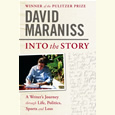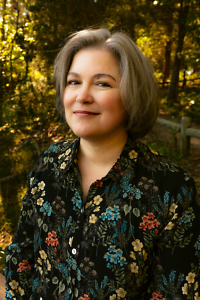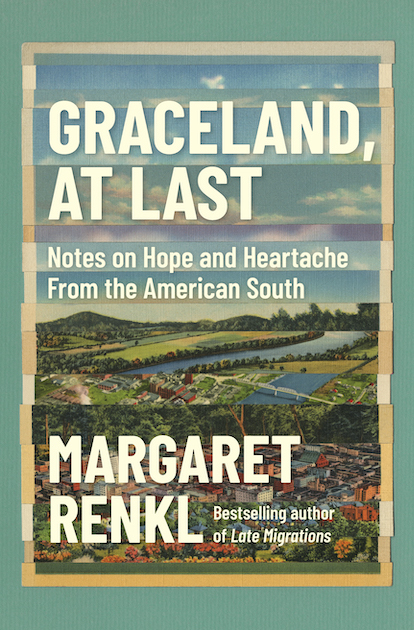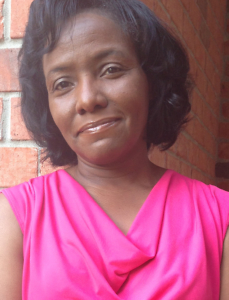Invisible Woman
James McGrath Morris recovers the life of Ethel Payne, a forgotten crusader in the struggle for black freedom
The Benjamin L. Hooks Institute for Social Change at the University of Memphis bestows an annual award on the book that best furthers understanding of the American Civil Rights Movement and its legacy. The 2015 winner is Eye on the Struggle: Ethel Payne, the First Lady of the Black Press, a biography of a crusading journalist who has since been largely forgotten.

The author, James McGrath Morris, has written other acclaimed books, including Pulitzer: A Life in Politics, Print, and Power, which The Wall Street Journal called one of the five best books on American moguls; The Rose Man of Sing Sing: A True Tale of Life, Murder, and Redemption in the Age of Yellow Journalism, a Washington Post Best Book of the Year; and Jailhouse Journalism: The Fourth Estate Behind Bars. Morris answered questions via email from Chapter 16:
Chapter 16: Ethel Payne was a black woman who came of age during the Great Depression, yet she crafted a successful career as a journalist and activist. How did her early life lay the foundation for these accomplishments?
James McGrath Morris: There are a number of things about Ethel Payne’s early life that contributed greatly to her success as a journalist. First, her mother was a tremendous influence. Bessie Payne had an indomitable spirit, and it remained an anchor for Ethel and her siblings as the family weathered the Great Depression. It was also her mother, a Sunday school teacher, who encouraged her to read and insisted she remain in school. Second, Payne attended Linblom Technical High School, which had a strong college-prep program. It was the best white school in Chicago and Payne was able to attend because her house was two blocks inside its enrollment district. Not only did she gain a top-flight education there, but she also learned early in life how to function as a black woman in a white society, a skill that would serve her greatly years later when she became a reporter in the nation’s capital.
Additionally, Payne’s early life in Chicago helped make her into an activist. The city remained intransigently inhospitable for an ambitious black woman. Seven out of ten employed black women worked as domestic servants. A professional black woman was as rare in the Windy City as a warm day in winter. As a result, the example of the South Side was an empowering influence on Payne. Excluded from Chicago, African Americans built their own city within a city. Turning, as one observer put it, “segregation into congregation,” they set about strengthening their own institutions. One could cash a check at the Binga State Bank, Chicago’s first black-owned bank; pick up a new supply of High-Brown Face Powder from the Overton-Hygienic Company; make a payment on a life-insurance policy at Supreme Life; pay respects to a deceased relative at the Jackson Funeral System; consider a new house at the Julian A. Black real estate office; take in a show at the Regal Theater; or hail a cab from the Supreme Taxicab Company.
So Payne’s mother, her schooling, and the South Side all comprise elements of Payne’s preparation for life as a journalist.
Chapter 16: One of the more fascinating ongoing stories in this biography is Payne’s relationship to President Dwight Eisenhower. How do their professional interactions evolve, and what might it say about the role of the federal government in race relations?
Morris: At first President Eisenhower was sympathetic to the three black journalists in the White House press corps. “I suppose nobody knows how they feel or how many pressures or insults they have to take,” he told an aide. “I guess the only way you can realize exactly how they feel is to have a black skin for several weeks. I’m going to continue to give them a break at press conferences despite the questions they ask.” He didn’t know how fiercely Payne would pursue that opening. “If I was going to succeed at all, I would have to learn to be aggressive and tough as the rest of the persons in the pack,” she said.
What she learned quickly was that merely asking questions of the president about civil rights helped put the topic on the national agenda. In those days, presidential press conferences were important and often reprinted in their entirety in newspapers. So when Payne, for example, brought up the topic of segregation on interstate bus travel, the mainstream media—all white—was forced to report on the topic. Her questioning of Eisenhower also highlighted the reluctance of the federal government to interfere with what it perceived as state prerogatives; in short, it was unwilling to force Southern states to change.
 Chapter 16: Payne wrote about just about every major event in the civil-rights movement, from the murder of Emmett Till to the Montgomery Bus Boycott to the March on Washington. What was the role of black newspapers—particularly the Chicago Defender—in the American civil-rights movement?
Chapter 16: Payne wrote about just about every major event in the civil-rights movement, from the murder of Emmett Till to the Montgomery Bus Boycott to the March on Washington. What was the role of black newspapers—particularly the Chicago Defender—in the American civil-rights movement?
Morris: The role of the black press is not understood by a majority of Americans and ignored in traditional history textbooks. Like most African American institutions, it operated completely out of sight of white America. “To most white Americans the black press was a voice unheard, its existence unknown or ignored,” said Enoch P. Waters, an editor at the Chicago Defender. However, that did not mean black papers were not important. Quite to the contrary. “The most predominant media influence on black people was the black newspaper,” recalled veteran reporter Vernon Jarrett, whose Negro Newsfront was the first daily radio news broadcast in the United States created by an African American. “They were—our Internet. They were our cement that helped keep us together.”
Payne in particular was instrumental in the civil-rights movement. Her unflinching yet personable reporting enlightened and activated black readers across the country and made her a trusted ally of civil-rights leaders. For example, on the scene of the bus boycott in Montgomery, Alabama—before the name of Martin Luther King Jr. had started appearing in the national news—Payne reported that a new black leadership was emerging, different from the old ranks of the NAACP. “Instead,” she told her readers, “this gladiator going into battle wears a reverse collar, a flowing robe, and carries a Bible in his hand.”
Payne saw herself as both an emissary from and a representative of a large group of Americans long neglected by the mainstream media. A few years before her death, she told an interviewer, “I stick to my firm, unshakeable belief that the black press is an advocacy press, and that I, as a part of that press, can’t afford the luxury of being unbiased . . . when it comes to issues that really affect my people, and I plead guilty, because I think that I am an instrument of change.”
Chapter 16: As a woman, did Payne face unique barriers in the field of journalism? What personal struggles did she have to overcome?
Morris: A lot. It was hard enough being an African American pursuing a professional career, but Payne was also a woman. It was two hard strikes against her. Take the example of Payne’s colleague Alice Dunnigan. In 1948, when President Harry Truman took off on a fifteen-day, 9,000-mile train trip that would presage his famous fall campaign whistle-stop tour, Dunnigan had to pay her own way by taking out a loan after her boss at the Associate Negro Press, Claude Barnett, refused to approve the $1,000 travel costs. Her boss’s stinginess was a result of sexism rather than parsimony: “I did not think a woman could do the best job on a jaunt of that kind,” he said.
Female reporters had first been seen at presidential press conferences during the Franklin D. Roosevelt administration, when two women joined the all-male White House press corps. But their entry didn’t signal an acceptance of women on the hard-news side of the media. In fact, two years earlier Barnett had hired Dunnigan to work for the ANP only because all the men he approached turned down the pitiful salary he offered. So, yes, it was tough.
Payne was also a professional woman in a time in which that role often precluded a long-term romantic relationship. She did not sustain any serious relationship with a man. Her success and stridency was off-putting to African American men. In the end, she once said, she was married to her career.
Chapter 16: In the final chapter, you call Payne a “citizen of the world.” She reported from post-war Japan, the 1955 Bandung Conference, the Vietnam War, Richard Nixon’s visit to China, and Africa. How did this travel shape her outlook on the United States?
James McGrath Morris: As it happened to her while working Japan after World War II, the experience of traveling the world as a reporter gave Payne new insights about the United States. First, merely operating in places where race mattered less than back home was life-changing in a hopeful manner. Second, Payne came to understand that international affairs and civil rights were inextricably linked. The black freedom struggle in the United States was part of a larger global struggle. For that reason she paid great attention to the emerging states in Africa and worked hard on the American efforts to end apartheid in South Africa.
Chapter 16: Why has Ethel Payne been forgotten? What is her legacy?
James McGrath Morris: The fact that more Americans don’t know about Ethel Payne is a hangover of segregation. As I said earlier, the black press operated in invisibility to white America. Civil-rights historians, until recently, ignored the black press as a source for their writing. When The Washington Post published its obituary of Payne, it also devoted an entire editorial to her passing. “Her voice was low, but her questions were piercing, and her reports on the world were cherished by millions of readers,” the paper said. Recalling the remarks of a Howard University professor, the Post said, “Had Ethel Payne not been black, she certainly would have been one of the most recognized journalists in American society.”
For me her legacy is twofold: first she showed that it matters who has a seat at the table. No one was asking the kinds of questions she did until she joined the White House press corps. Her life is also a gentle reminder that the great power of a free press rests on a simple notion of rendering those in power accountable. Payne’s journalism invoked none of the angry name-calling fashionable in the news media today. Rather, she brought only one weapon with her when she gained access to the halls of power on behalf of her readers. It was to ask questions that others were not asking. And she got answers.

Aram Goudsouzian chairs the history department at the University of Memphis. His most recent book is Down to the Crossroads: Civil Rights, Black Power, and the Meredith March Against Fear.





